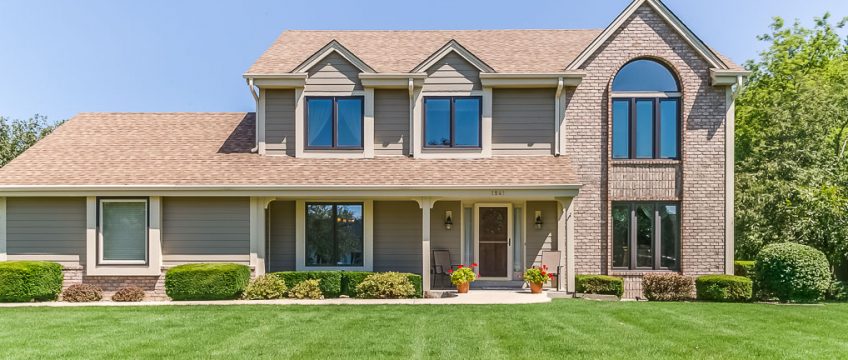*The featured image above was taken by Suburban Lens of a past listing.
Poor lighting, crooked lines, and awkward angles make listing photos look amateurish. But just how big of a difference is there? Photography pros from Realtor Magazine share amateur images on the left and professional images on the right that exemplify the rules of high-quality photos, along with tips for capturing the perfect picture.
1. Be cognizant of the position of the sun.

A front exterior shot of a home or building is often the first image buyers see in an online MLS listing. The time of day for these outdoor shots is key. The photo to the left shows the exterior with the sun directly overhead, which can make a home appear dark. It’s best to shoot when the sun shines directly onto the front of house.
2. Interior photos should not compromise window views.

In an interior shot of a home, what’s on the outside matters as much as what’s inside. Professional photographers use high dynamic range, or HDR, to create one photo where you can easily see both the inside and outside.
3. Think of a wider view with every shot.

The camera lens you choose will have an impact on how much detail you can get into a shot. A photo taken with a wide-angle lens, such as the one at right, can capture more of a room than a standard lens.
4. Find the best position in a room to shoot from.

The position from which you take a photo in a room affects the perception of how big or small the room is. In the photo at left, the image of a great room is captured from behind the sofa, and the furniture distracts from the space and makes the room appear tighter. But when shooting from the side of the sofa, the space appears larger.

Another set of photos of a bedroom shows the importance of the “three-wall rule”. Try to frame a photo so you capture three walls in a room, which can provide greater balance and scale. Taking a photo from a doorway often offers a view of only one corner of a room and can make it feel smaller.
5. Smartphone photos kill the lighting.

Don’t underestimate the power of great lighting. Both photos above were shot with the room’s lights turned on and curtains opened to reveal natural light. So why the difference in brightness? “The photo on the left was shot with an iPhone. The well-lit photograph on the right was shot with a DSLR camera, as well as an external flash. The DSLR handles any low-light setting much better than any cell phone can.
6. A tripod can lower the risk of human error.

Crooked photos are jarring, which is why it’s best to use a tripod for more even shots. The photograph at left was taken without a tripod, while the photo at right was taken with a tripod. A tripod not only keeps the camera straight but also helps eliminate blurriness.
Suburban Lens puts these tips into action providing the best service for every home listed with Laura.

